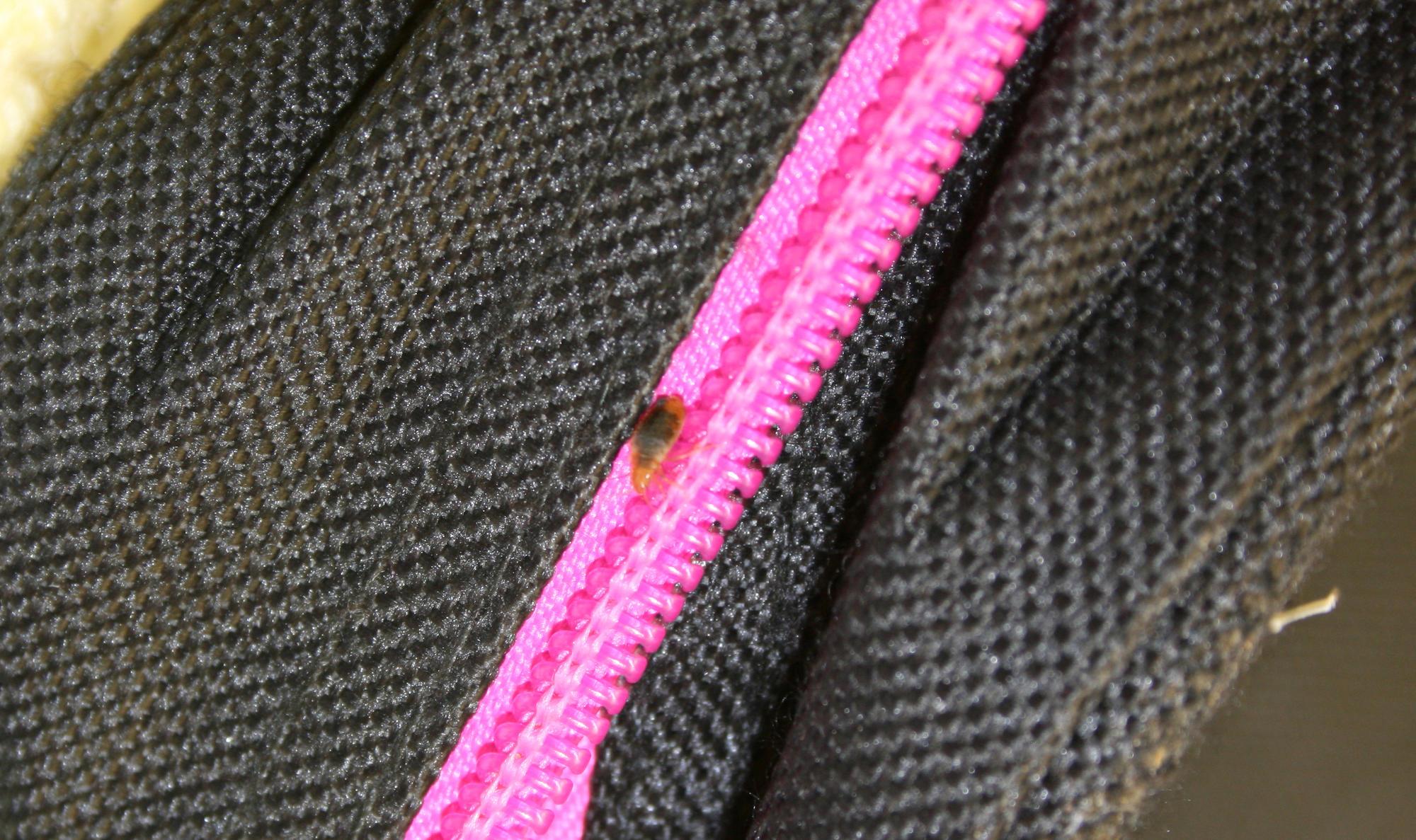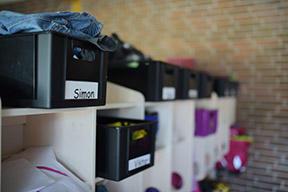Finding bed bugs in school buildings is not uncommon and should be anticipated.
Bed bug infestations in the U.S. have increased rapidly since 2004. In schools, we typically see bed bugs as individuals. In homes and living spaces, we are more likely to see infestations of multiple life stages — adults, immature stages and eggs. As more living spaces become infested, we can expect to see more bed bugs in schools. Most often they have dropped from a student, staff member, teacher or their belongings.
Finding a bed bug in school
When someone finds a suspected bed bug, proper identification is important.
Collect the insect using forceps or tweezers and place it in a vial or container that can be securely sealed. Record on an index card the date, time, room number and location in the room where the insect was found. Place the specimen and index card in a resealable bag and store the sample in a refrigerator for identification. Report the find to your facilities manager or IPM coordinator for verification.
The IPM coordinator or a pest management professional will determine if the sample is a bed bug. If a bed bug is confirmed, they will investigate the area to determine if it is a singular introduction or from an infestation nearby. Deep-cleaning and monitoring of the area should follow.
When finding a bed bug, it is important not to overreact. There is never a need to evacuate a classroom, building or school bus. If an insect is associated with a student, teacher or staff member, treat that person with care and confidentiality. In all but the most extreme cases, it is unnecessary to remove someone from school.
Tips for teachers, staff and students
Be aware of how bed bugs commonly arrive at home:
- Bed bugs can move out of infested apartments into surrounding units by traveling through common walls, ceilings, floors and along internal corridors.
- Bed bugs hitchhike into living spaces on secondhand furniture, clothing, toys, books and other items that have come from an infested home. Inspect and clean secondhand items, and completely avoid discarded bed mattresses, box springs, bed frames or stuffed furniture.
- Travelers can unknowingly transfer bed bugs from their belongings back to their living spaces. Unpack bags straight into the washing machine and wipe nonwashable objects with a dry microfiber cloth. Vacuum your bags and luggage before storing them in a garage or storage area outside of the living space if possible. Double wrap luggage in plastic bags before storing it indoors.
- Children returning from summer camps, sleepovers or other homes can bring bed bugs back to their living space. If you take bedding to a child care facility, school, home, hotel or shelter, wash and dry all items thoroughly as soon as they are returned.
- Bed bugs may arrive with overnight guests who have traveled from an infested location. This may not be their own home if they have traveled via hotels and motels. Ask visitors to follow the same precautions you would take yourself returning from a trip.
- Launder bedding and vacuum the home regularly to reduce the chances of an infestation. However, even clean, well-maintained living spaces can harbor bed bugs for several months before you discover an infestation. You may not detect their presence until someone develops a sensitivity to the bites. Eliminating established bed bug infestations from living environments requires specialized knowledge and treatment. Contract with experienced pest management professionals.
What everyone should know
- Bed bugs do not transmit germs, so you will not get sick from bed bug bites.
- People sensitive to bed bug bites most commonly experience reddening of the skin, swelling and itching. People may suffer with insomnia and anxiety.
- Finding bite reactions does not confirm a person has been bitten by bed bugs. Reactions to bed bug bites vary from person to person, and bed bug bites may appear similar to reactions caused by other triggers, or other insect bites including mosquitoes.
- Retail sprays and foggers (“bug bombs”) are ineffective at exterminating established infestations. Experienced pest management professionals use specific products, equipment and treatment protocols.
- Apart from schools with dormitories and child care facilities, the chance of bringing a bed bug home from school is extremely small.
For more information, see Integrated Pest Management for Bed Bugs in Schools.
References
Alalawi, A.H. 2014. Bed Bugs Epidemic in the United States. Entomology, Ornithology & Herpetology 4(1): 143.
Goddard, J. 2018. Infectious Diseases and Arthropods. Humana Press.



